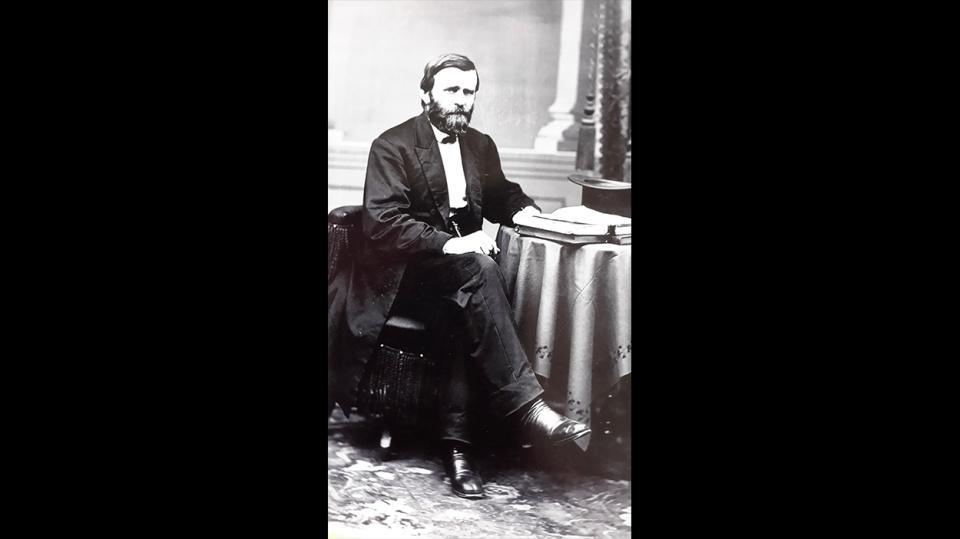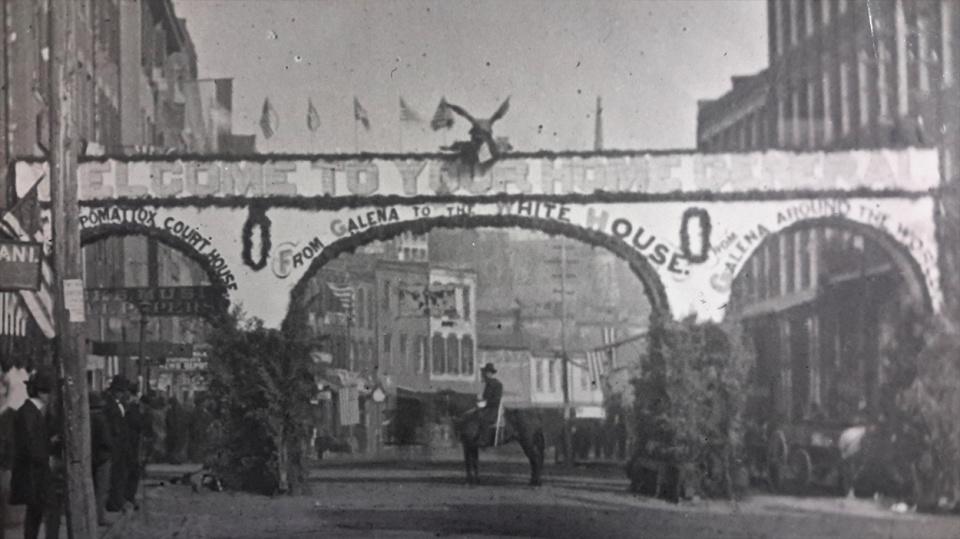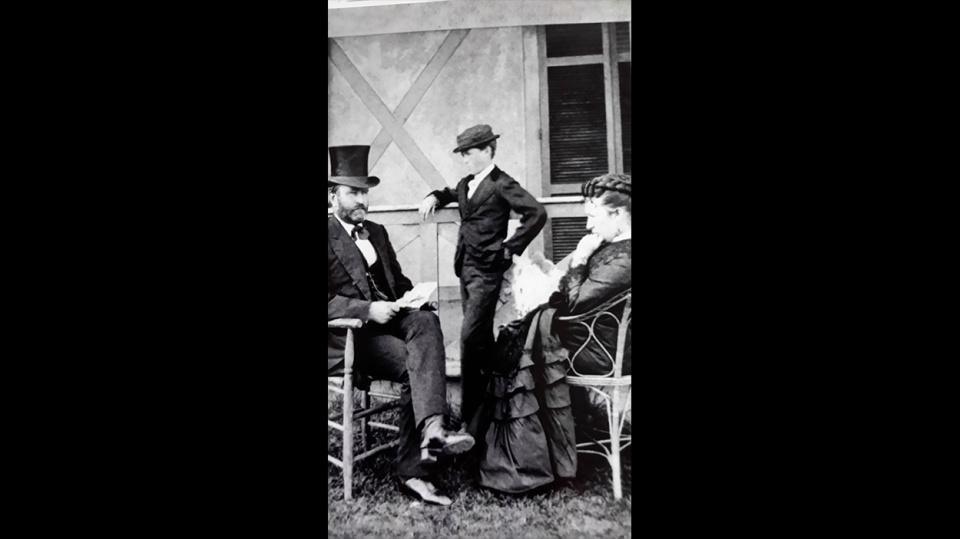Their next visit to Galena was three years later, Friday, August 7, 1868. As the train which carried them whistled for the Galena stop, the bronze cannon named “General Grant,” which was situated on the hill near the high school building, boomed forth a greeting which echoed through the valley. The General and his family were met with cheers of welcome. Carriages carried the distinguished family up the hill to their residence. Later that evening, General Grant was formally welcomed back to Galena. After a speech by General John C. Smith, General Grant replied, “Fellow Citizens of Galena: After an absence of three years, it gives me great pleasure to meet you here in Galena where I expect to spend a fortnight with you very agreeably and quietly. I shall be glad to see you at your homes and shall be pleased to meet you at mine whenever you can make it convenient to call. Of course I shall not take this occasion, or any other, to make a speech. That’s a matter upon which you are all well-informed. I thank you for this kind reception.” As I mentioned earlier, Grant was a man of few words, and his speeches were always short.
During this visit, General Grant was the Republican nominee for President of the United States. He had been unanimously nominated at the Republican Party Convention in Chicago in May of 1868. Although he read the newspapers and discussed public affairs, he did not actively participate in the campaign. His campaign headquarters were located at Galena’s DeSoto Hotel.
On November 3, the night of the 1868 elections, around 10 o’clock p.m., Grant went to Washburne’s house to receive the election returns via telegraph. (You will learn more about this monumental night on the East Side Tour at the Washburne House.) When the results were in, it was official; Ulysses S. Grant defeated Horatio Seymour by a popular vote of 3,012,833 to 2,703,249 votes and an electoral vote of 214 to 80. When Grant left the Washburne house, he walked up the hill and found an excited group of citizens waiting outside his house. He graciously thanked them for their support, and the following day he opened his home to the public. Hundreds of proud citizens filed through, personally congratulating him on his victory. I can only imagine the exhilaration that filled the community!
Galena’s Grant had been elected the 18th President of the United States, and at 46 years old, he was the youngest elected President until President John F. Kennedy.
After his election, Grant remained loyal to his friends. Washburne, who had served 18 years in Congress, was subsequently named Secretary of State and later, Minister to France. Chetlain became Consul General to Belgium, and Rawlins was appointed Secretary of War. Grant was re-elected for his second term as President in 1872, and Vice President Henry Wilson was sworn in.
While President, Ulysses S. Grant visited Galena twice. The first visit was September 28, 1871. He was accompanied by Mrs. Grant and their daughter, Nellie. They were warmly greeted by all who saw them and they renewed many old acquaintances during their stay. The Galena Gazette reported, “The President is in excellent health and weighs 26 pounds more than at the close of the rebellion. We have never seen him looking better.”
Two years later, on May 1, 1873, he returned to Galena, again accompanied by Mrs. Grant and Nellie. They arrived at nine o’clock in the evening, and the Galena Gazette reported, “Many stores, public houses and private residences were brilliantly illuminated, and there was a fine display of fireworks from the highest point on Prospect Street, in front of the residence of Judge Seal. This grand demonstration was participated in by all our citizens, without distinction of party.”
On May 3rd, there was a reception held in the President’s honor. Following the opening ceremonies, President Grant made a short speech thanking the citizens of Galena for their kind receptions.
One month after his presidency had ended, General and Mrs. Grant returned once again to Galena. He spent three days in Galena before departing on his 2½ year world tour. The night before his departure, a grand reception was held at the home of Augustus Estey. (You will learn more about that night when we visit the Estey House on the West Side Tour.) The next morning a large crowd of citizens were present to see the distinguished couple off, and as the train moved away, the General and his wife appeared upon the rear and gracefully responded to the farewells of their friends.
His epic world tour ended December 1879 when he arrived in San Francisco. The Grants had traveled through Europe, Egypt, India, China and Japan. The General had returned to the United States as one of the most celebrated travelers of all time. His fame as General and as President was world-wide.
He returned to Galena, on November 5, 1879, but by then the town had lost much of its commercial prestige. Despite this, Galena gave him an enthusiastic reception. An arch was once again erected across Main Street, every home displayed flags, and the business streets were decorated as never before. (The arch stating, “From Galena to the White House” is shown in the photos.) Celebrities and veterans came from all parts of the country to greet Grant. Soon, the city’s accommodations became inadequate. Its streets were too narrow for the parading military groups, drum corps, fraternal drill teams, marching societies, fire departments, and civic and social groups. Speeches were delivered welcoming him back to his home town and Grant gave a short speech thanking Galena’s citizens. At night fireworks were displayed from an arch above Main Street near the DeSoto House. Unfortunately, a premature explosion ignited the arch, resulting in many injuries. Postmaster Warren W. Huntington, who was in charge of the program and a personal friend of Grant, sustained extensive burns which he ultimately died from. (The image on your screen is of Grant with his wife, Julia, and his youngest son Jesse at Long Branch Missouri in 1872.)




